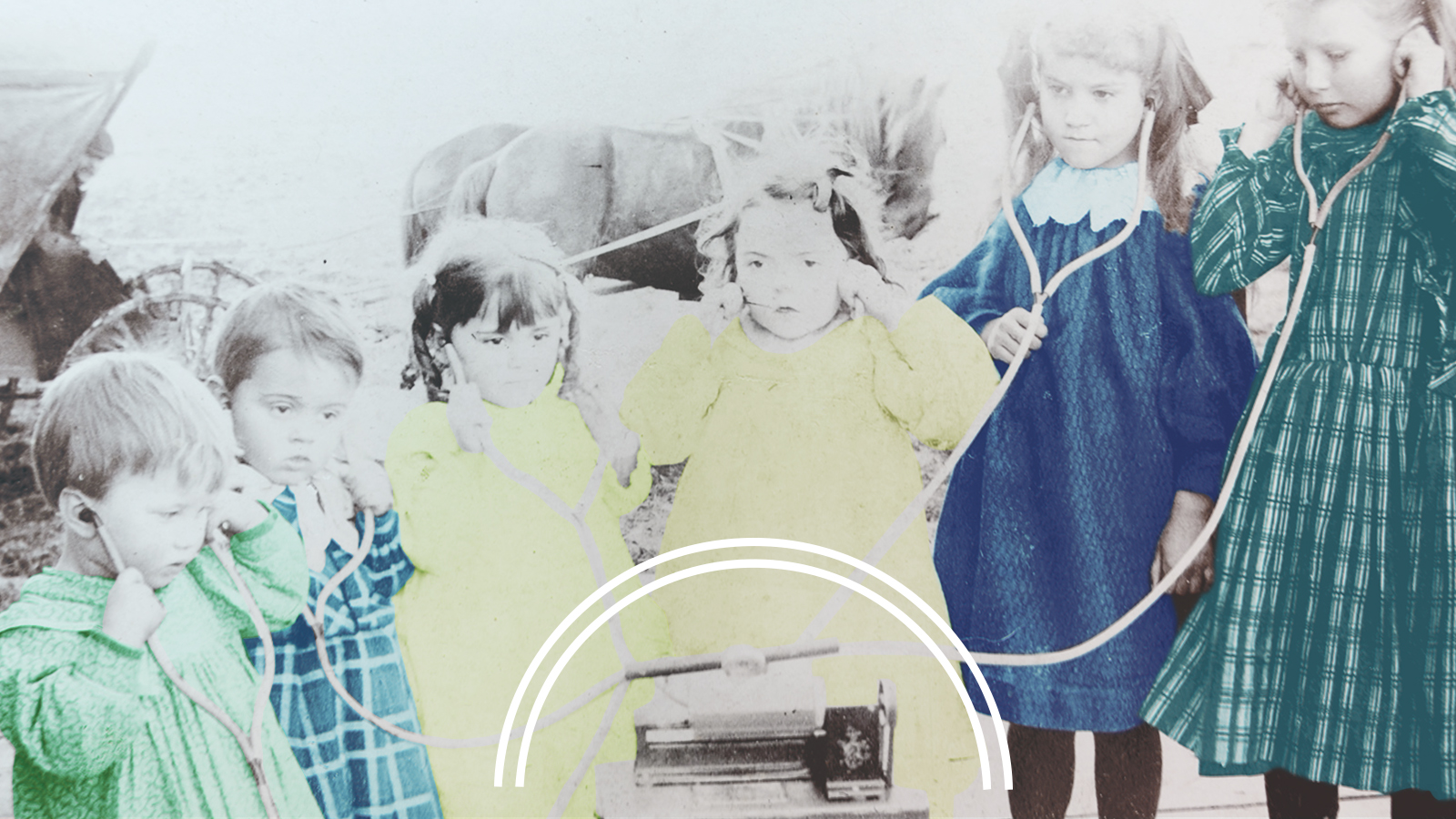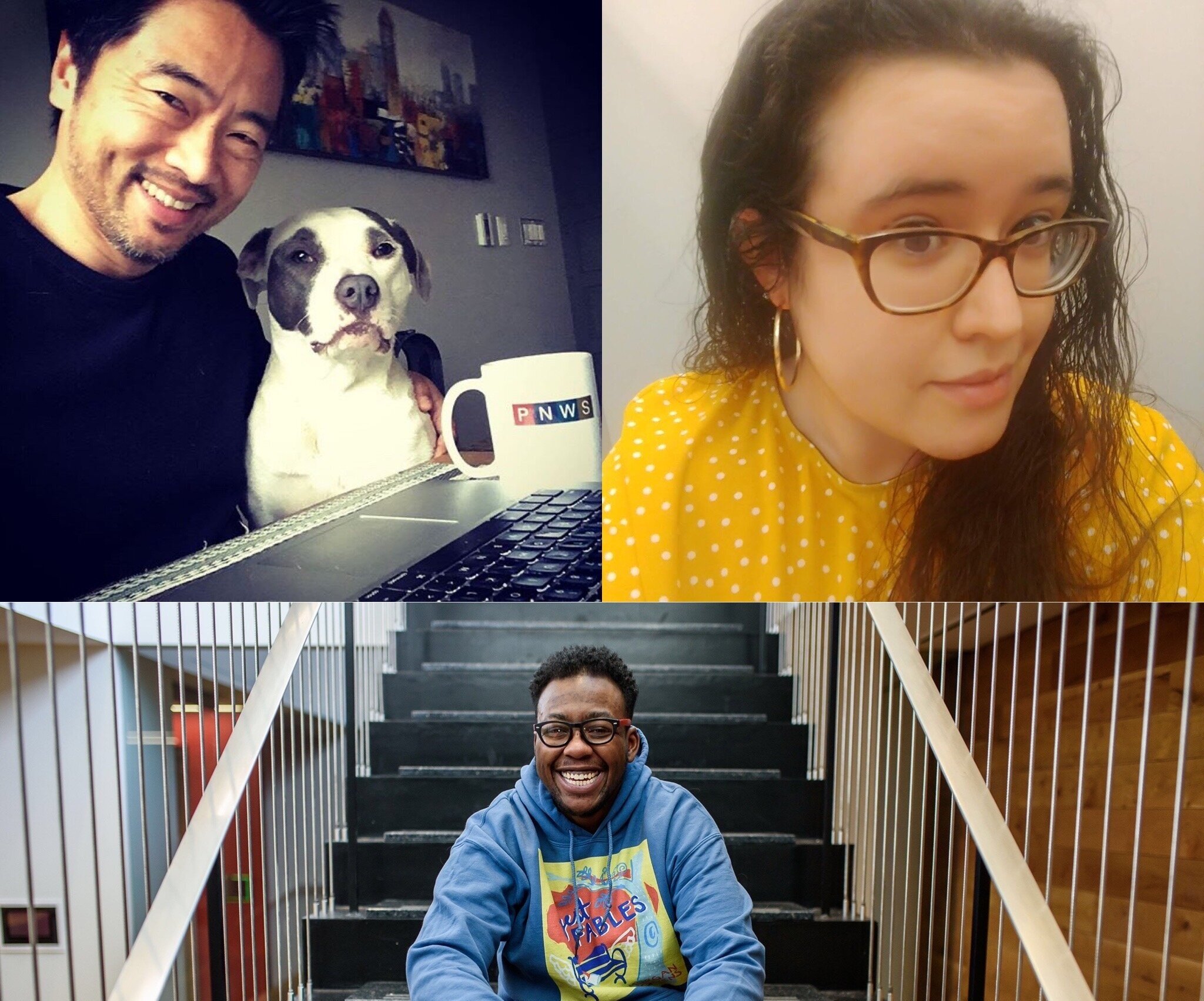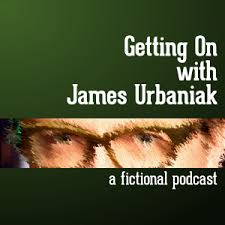Reinventing the Familiar
When the Bar for ‘Radio Drama’ is High, Where Do You Start?
Mira: The bar for fiction, in any medium, is much higher than non-fiction. You’re responsible for every single detail of the story because you’re making it all up, so if the characters are boring, if the plot is unsurprising, if the dialogue is clunky, it’s all your fault. And your audience is way less forgiving about any of it.
The bar for radio drama is even higher because for many listeners radio drama is still associated with over-the-top performances and cheesy sound effects. Knowing all this can be pretty daunting when you’re sitting down to write your piece. So how do we cope? Here’s how:
We’ve found that, in our own work at least, it can be helpful to start with a familiar setting.
Cristal: Starting with a familiar setting is the idea of dropping listeners into a space where they already know the drill–a space with a recognizable structure and its own lexicon/images already built-in.
Part of what makes radio so special is that it’s an interactive medium; it builds off the information that’s given. Listeners draw the pictures of the story in their head which in some ways gives them a shared ownership over the story.
Mira: That’s probably what helps to create that intimacy that’s always talked about.
Cristal: But that kind of engagement is also asking a lot from an audience, especially when our attention spans are so short! As producers, it’s our job to provide a setup that will allow listeners to want to work with the material. Starting with a familiar setting makes our job easier as producers because we’re not bogged down describing every detail. We can instead focus more on the characters and their emotional world.
Mira: A lot of contemporary radio dramas use this approach to some extent by mimicking the documentary format (think The Message or Limetown). These shows draw on documentary elements like ‘the reporter character’ or ‘archival tape’ in order to disguise their radio fiction within a familiar, digestible form.
But if we all jump on board with the faux-documentary trend, the fiction landscape will get monotonous pretty quickly, and there are a lot of other forms with which to experiment.
Below are examples of how situating your story within a familiar scenario can actually enrich the narrative.
Lesson 1: How a predetermined structure supports your plot.
Cristal: Starting with a blank slate and an infinite amount of possibilities in terms of where a story can go can sometimes be debilitating, so having a predetermined structure in radio drama can be a great thing. We did a piece on WireTap a few years ago called "Call of Dating." Basically, it takes online dating tropes and sticks them into a video game format. We kick off the piece with an over-the top narrator and sound effects that are characteristic of modern video games so listeners get a pretty good sense of what kind of world they’re in within the first few seconds of the piece.
We then follow the player as they navigate through the different levels of the game to find true love. So in this case, having the structure of a video game already in place eliminates the need for a lot of explaining.
Mira: By imposing itself onto a video game setting, the piece has this built-in story arc of overcoming obstacles, moving from one level to the next, and a built-in tension of wondering if our character or player will win or lose.
And since this structure is so familiar for people, the piece can dive right into the action without having to spend much time setting up stakes or making sure the audience is on board. The more comfortable the audience feels within that structure and the more they think they can predict where the piece is going, then the more we can play with those expectations and take them somewhere unforeseen and surprising. Like when the piece diverges from the traditional video-game ending and goes to an unexpectedly emotional place.
The emotion resonates on a much deeper level for the audience because they are caught off guard. It’s about striking a balance between giving your audience a structure that makes them feel safe while also keeping them on their toes.
Lesson 2: How familiar sound fuels imagination.
Cristal: It’s easy when making radio drama to get caught up in trying to replicate the experience of a visual medium. But when we are coming up with ideas for our radio dramas we try to think of situations in which the sound works as a more natural conveyor of the information and structure. Unlike film or television which can deliver a ton of information about a setting, time, and situation through a single establishing shot without slowing down the story, radio drama doesn’t have an equivalent to this kind of instantaneous visual information–so dialogue and sound are relied on to be expository. But at the same time, this exposition is often what makes radio drama feel too stagey or clunky, i.e, having the characters point to visual things in an explicit way.
Mira: Yeah, like:
“Oh no! Frankie slipped in the rain and now has a giant cut on his head that is bleeding!”
“But look! That man walking by is wearing a white lab coat! He must be a doctor! He’ll be able to help!”
Cristal: Ha. Having characters point to visual things in an explicit way like that can really be irritating for the listener as it takes up a lot of time and can inhibit connection with the characters.
Mira: A scenario that lends itself well to the medium will have inherent audio elements you can draw from. We set our radio drama "The Page Turner" during a live classical music concert. In this piece, the disgruntled page turner in question, Mitchell (played brilliantly by Sean Cole) has a live breakdown on stage during a performance. Through his inner monologue, we learn that he has a romantic relationship with the pianist for whom he is a page turner for, and it’s all falling apart--along with his career.
Cristal: In terms of sound design, we were able to parallel his breakdown with the structure of the classical music piece being played–because Mitchell is distraught, he keeps fumbling his page turns (sometimes even purposefully), making it impossible for his pianist partner to deliver the performance his fans have paid to witness.
Mira: Sound is not only used for background but is used to directly convey the emotional tension of the piece. The clash of wrong notes mimic the emotional clash of the characters. The heightened tension is mirrored by increasingly loud dynamics. The piece reaches its climax when Mitchell abandons all propriety and crescendos into live hysterics on stage.
Cristal: Sound is also conveying the humor. Having a character like Mitchell play out his personal crisis during a classical music concert is just inherently funny because of the seriousness and decorum associated with the context–especially when one juxtaposes the aura of prestige around a musician of such high caliber with the tedious and ridiculous-looking job of turning a page. Which brings us to lesson 3...
Lesson 3: Choosing a familiar setting can foster humorous conditions.
Cristal: Our radio dramas, although they do go to some emotional places, always rely on humor to tell the story. I feel like comedy works best when it draws from experiences and situations that are universal but then steers them into new, surprising territory. A setup that is too complicated or novel in radio drama might leave listeners feeling left out of the joke. There is the risk that they may just abandon the piece before getting to the punchline.
Lesson 4: How to repurpose archetypal characters
Mira: Starting with a familiar scenario can also help set up the characters in your piece and allow you to experiment with bringing those characters to life in a more surreal way.
In "Learning to Love Yourself," we re-created a 1970s dating game show, but instead of the typical three suitors vying for a bachelorette’s love, we made our bachelorette a self-loathing divorcée who must choose between three suitors from her own consciousness (her id, ego and superego) in order to find self love. The main character is basically having a midlife crisis as her inner selves battle it out, but because the piece is grounded in the familiar territory of a TV game show with its familiar cast of characters, we had the freedom to explore those elements of absurdity in a way that wouldn’t necessarily fly in a less familiar setting. By masking the absurdity within the predictable game show format, listeners don’t get lost in some soupy, Freudian nonsense but are rather made to feel comfortable within the chaos.
Cristal: Yeah, we’re essentially skipping a whole step of having to explain the purpose and drive of each character since their roles are already obvious from the get-go–for instance, the ID is known for coming from a place of instinct so it was automatic to have the ID character be bold and a bit abrasive with her needs being laid out in plain sight. Whereas the ego character is more considerate and tempered.
From there we can dive into further developing the characters and subverting those roles for emotional or comedic value. For instance, with Mitchell the page turner, we understand right away why he’s on stage so we can move on to playing with his traits to amp up the humor: making him bitter, petty and sad. By the end of the piece, we feel sorry for him but in a painfully awkward way because he is no longer performing his role with the professionalism and demeanor we expect.
With "Learning to Love Yourself," this kind of playfulness happens with the character of Charlie the Announcer who reads messages from the show’s sponsors throughout the piece. Since everyone is familiar with the authoritative announcer voice in commercials or on daytime television, we know what Charlie’s purpose is the first time we hear from him. Once his familiarity is established, we can reveal his vulnerable side by having him interject at inappropriate times throughout the game–he just wants to be included in the fun!
The host, Dwayne, also an archetype we push to the extreme, then keeps trying to force Charlie back into his standard role. And that tension between them provides more comedic opportunities.
(Listen to all of "Learning to Love Yourself" here.)
Lesson 5: Maximize dialogue to move the story forward.
Mira: Dialogue is one of the trickiest elements of radio drama. I hate writing it so much that I generally try to avoid it at all costs. Luckily there are ways to get around it that aren’t too noticeable. I wrote a piece with Jonathan Goldstein for WireTap once about a GPS that helps lost drivers find their way by navigating not geographic but emotional loss. “Turn right and drive slowly past your ex-boyfriend’s place. Don’t stop at the donut shop to drown your sorrows in deep fried dough.” While the piece takes listeners on a pretty strange journey, the actual language of a GPS talking to you while you’re driving is something we’re all familiar with and it allowed us to tell a new story without having to develop a believable and compelling language-style from scratch.
Cristal: Another pitfall in radio drama is that people often try to replicate the kind of dialogue that happens between actors in a film. There are a lot of things at play here with regard to how all our different senses work. Along with dialogue, there is a lot of other communicating going on in visual media, for example: body language, facial expressions, and setting. In film, the audience is able to follow characters around and listen to them just ‘chat’ without feeling like it’s slowing down a story. Whereas in radio, the dialogue can’t be as aimless because the story is being conveyed entirely through words.
Pro-tip: using a scenario where the interaction has a predetermined structure ensures that all communication has a clear goal.
For example, in a piece we did on Love Me called "Family Photo," we listen in as a man tries his best to get one decent group photo with his family members. What should be a very simple task quickly turns into a nightmare as each of family member brings their own baggage to the process. While some of the backstory is delivered through conventional dialogue, most lines of the script are both moving the emotional story forward and directly relating to the specific task at hand of taking this photo. The fact that the script is rooted in such a concrete and relatable action makes the dialogue feel inherently more natural. There is a process we are familiar with (who hasn’t been involved in a painful photo-taking session?) as well as an explicit purpose for the scene which gives us a clear end in sight.
(The entire Family Photo piece can be heard here)
The Familiar May Be a Little Risky
Mira: As much as I love playing with these various settings, there’s a certain part of me that feels like it’s cheating to rely so deliberately on existing scenarios in order to create our stories. If we’re always building on the familiar, are we missing out on the opportunity to develop something entirely new? Are we being lazy by relying on an existing language rather than creating a new one? I wonder sometimes if there’s a way to engage an audience and push the art form forward without having to have this somewhat parasitic relationship to familiarity.
Cristal: I don’t think of it so much as cheating–I feel like all art forms draw from pre-existing scenarios and experiences in one way or another. And while I also believe that there’s a lot of room for experimentation and advancing radio drama as an art form, I have a hard time imagining what that would sound like; even sci-fi, which is supposed to be all imagined worlds, is still built on recognizable structures. So what would a unique, unfamiliar form in radio drama sound like? Stream of consciousness dialogue? New vocabularies? Pure sound? And most importantly: would it actually be listenable?
Mira: Yeah, that sounds kind of terrible actually. But maybe someone out there can figure it out! I think the important part is really making sure that, even if it’s drawing on familiar elements, the treatment of each story is innovative and offers a new perspective or provides a unique experience. Since you’re meeting the listener half-way by starting from a familiar place, you are, in some way, making truly imaginative experiences a little more accessible.
Mira Burt-Wintonick and Cristal Duhaime are award-winning audio producers based in Montreal who have worked in public radio for just over a decade. Most recently, they created and produced CBC's Love Me, a podcast about the messiness of human connection. Previously, they produced WireTap with Jonathan Goldstein, for which the team won the 2015 Prix Italia for Best Original Radio Drama. They also won Gold at the 2015 Grand Prix Nova for their short radio drama, Call of Dating. Their work has been featured on This American Life, Snap Judgment and The Truth, among others. Mira and Cristal’s next radio project is a short fiction series for Howl.






